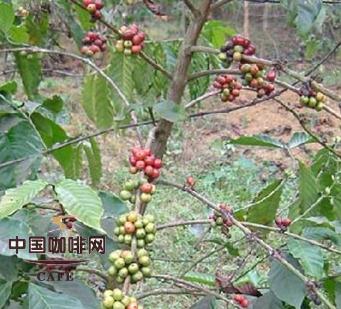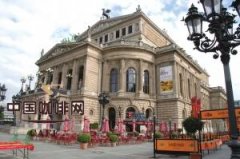The main producing areas of coffee and the characteristics of strict selection of beans with high quality
At present, due to the wide variety of imported coffee beans on the market all over the world, there is no choice. Here, we will introduce the main producing areas and the characteristics of coffee beans as a reference for you to buy coffee.

* Brazil (South America)
For the world's number one coffee producer and exporter. Because it is distributed all over the country, it has its own standard (NO.2-NO.8 according to the number of adulterants, NO.13-NO.19 according to the size of beans, and six grades according to taste). Almost all Arabica species are of good quality and stable in price, the most famous being Brazil. Santos, since ancient times, has been a necessity of blended coffee and is familiar to the public. Recently, the "Tolma Cup" is also highly rated.
* Colombia (South America)
After Brazil, it is the second largest coffee producer in the world and Colombia. The leaders of the Maird Group (Colombia, Tanzania, Kenya). The Maird Group is one of the categories of origin on the New York Stock Exchange, in addition to Asa. Maird, Antwood Shard. Arabica, Robusta). The more famous producing areas, such as "Medellin", "Manizares", "Bogota" and "Armenia", all the coffee beans cultivated are Arabica species, which are quite rich in taste, and the quality and price are also very stable. The roasted coffee beans look bigger and more beautiful.
* Mexico (Central United States)
The coffee cultivation belt of this country is similar to Guatemala in the south in terms of geographical and climatic conditions, so it is included in the scope of "China and the United States". The main producing areas are distributed in Goa DiBuick, Oaxaca and other states, especially the water-washed coffee beans produced in the highlands, which have excellent aroma and sour taste. Again, the specification is divided into Aldora (4000-4200 ft) and Prima according to elevation. Labado (2800-3300 ft), Boone. Labado (2100-2500 ft) is divided into three categories. Most of the products are sold to the United States.
* Guatemala (Central United States)
These are the coffee beans most familiar to the Japanese. The first producing area is located in San M á rquez, which is close to the mountains of Mexico. The second place of origin is Caesar Denango in the south. Other countries such as Gobang and Antigua are also famous. Slightly sour, mellow and smooth, it is the best material for mixed coffee. The classification is divided into seven grades according to the elevation. The coffee beans produced in the highlands are more mellow, while the coffee beans produced in the lowlands are of lower quality.
* Note: S.H.B = strict selection of good quality beans
* El Salvador (Central America)
Asa is tied with Mexico and Guatemala. The producer of the Merdo Group, and is competing with other countries for the top one or two places in China and the United States. Produced in the highlands, for the size of the large coffee beans, fragrant and mild taste. It is also divided into three grades according to elevation: SHG (strictly high grown) = highland, HEC (high grown central) = mid-highland, and CS (central standard) = lowland.
* Honduras (Central America)
The washed coffee beans in the mountain areas are well received, while the coffee beans produced in the lowlands are of lower quality. Well-known producing areas are Santa Talbara, Gracias, Komayagya in the east, and Chortika near Nicaragua. Coffee beans range in size from medium to large and are characterized by a mild taste. Some of the products here are sold to Japan and are divided into three grades according to elevation.
Costa Rica (Central America)
The first-class fragrance is strong and sour, and it is highly valued. The place of production can be roughly divided into three areas: the Pacific coast, the Atlantic coast and the middle zone, and each is graded according to its elevation. All the coffee beans are quite large, especially the coffee beans produced in the high areas of the Pacific coast are sour and fragrant, they are first-class coffee beans, and there is a new "Clarke Hill". The coffee beans of the lowlands along the Atlantic coast are sour rather than mellow and have nothing special.
* Cuba (West Indies)
Cuba, famous for producing sugar, cigarettes and coffee, is a republic made up of Cuba, the largest island in the West Indies, and other affiliated islands. Coffee was introduced from Haiti by the French in the mid-18th century. Its beans are characterized by medium-large grains and bright green. The grades are divided into ETL (extra Super), TL (Intermediate) and AL (ordinary) according to the size of the coffee beans. "Mount Crydel" is Cuba's proudest high-end coffee beans with good quality and large shape.
* Jamaica (West Indies)
Jamaica is a republic of large and small islands in the Caribbean. Coffee is grown on the slopes of the mountains on Hengduan Island. The producing area can be divided into three regions: BM (Blue Mountain) and HM (High Mountain) and PW (washed coffee beans in Pulai), which are also the names of coffee. The ranking of quality and price is ①, ② and ③, while the ranking of production is ③, ② and ①. Among them, the flavor, aroma, concentration and sour taste of "Blue Mountain" are all very average and have a high evaluation. Almost all the products are sold to Japan.
Note: the price of Blue Mountain is about 1.5 times that of Gaoshan, and the price of Gaoshan is about 2.5 times that of other coffee beans. Both are first-class and well-balanced coffee beans with special value, which can be said to be coffee beans with high satisfaction in appearance and flavor.
* Kenya (Africa)
Located in Kenya below the equator of East Africa, the coffee beans planted are high-quality Arabica seeds. The size of the beans is medium-large, very thick and delicious, and the acidity is moderate. The grade is divided into seven grades according to the size of the coffee beans and six grades according to the taste. "Kenya AA" is particularly well received in terms of taste.
* Ethiopia (Ethiopia) (Africa)
The origin of the name of coffee comes from Canada in the southwest and Sidamo in the south. In addition, the Eastern Highland Hara is also famous for its coffee. The beans are small and fragrant, and Hara. Mocha "Longgubeli" is a special name with a unique flavor, usually only known as "mocha". Its specification is divided into G (geade) 1-G8 according to the mixing ratio of defective beans, and G5 imported by Japan (the number of defective beans in 300g is 40-100g). Recently, the favorite is the high-quality "washing" type. Ethiopia ".
Note: sour water-washed Ethiopia is mainly sold to Europe. The quality of non-washed coffee beans exported in the past has been unstable in recent years, so it has been gradually replaced by washed coffee beans, and recently most of them have been sold to Japan.
* Ye (Ye) Gate (Africa)
Yemen, commonly known as Arabia, is the birthplace of Arabica species, once known as "mocha coffee", but it was all the rage for a time, but now it is no longer a grand occasion. But its wine-like flavor, rich and mellow characteristics, is still quite popular with consumers after-dinner coffee. Together with the coffee produced in Brazil and Colombia, it is the three swordsmen who have been chosen as blended coffee. The "Matari" produced in the Bani Matar region and the "Sanani" produced in the Sanaya region are also quite famous, and the "Golden Matari" is also produced in Bani Matar.
* Indonesia (Southeast Asia) is mainly produced in Sumatra, Java and Sulawesi. 90% of them are Robbosa species, which can be rated as the first in the world in quality. Sumatra is best known for its rich, palatable and most advanced "Mantenin". However, importers have repeatedly criticized it for its poor quality and difficulties in processing and preservation. In addition, Mount Jiayu is produced in the northern part of the island, while Java is produced in Java. Arabica has a good sour taste, especially loved by the Dutch. Sulawesi Island is produced by a large grain of "Kalosi", represented by Delaga in the mountainous region of the southwest (elevation 1200 meters).
* Hawaii (Hawaii)
Coffee cultivation in Hawaii began with Japanese immigrants, but now coffee plantations have switched to walnuts, resulting in a sharp drop in coffee production. However, it is widely known as Hawaii. But that "is a mellow, sour high-quality coffee bean.
In particular, the coffee beans on the perennial coffee tree, slightly sour can brew a unique flavor, known as "many years can be that", well received.
Important Notice :
前街咖啡 FrontStreet Coffee has moved to new addredd:
FrontStreet Coffee Address: 315,Donghua East Road,GuangZhou
Tel:020 38364473
- Prev

The benefits of drinking coffee the top ten benefits of coffee
What is the charm of coffee? Just as bitter, fragrant and mellow, with the charm of caffeine, alcohol or tobacco can be intoxicating and exciting, just as caffeine can be exciting. In caffeine, because it can stimulate the central nervous system or muscles, it can restore muscle fatigue, improve work efficiency, and have a sober effect.
- Next

Café Life Cafes in Paris with a human touch
Paris, as the world's art center, reached unprecedented prosperity before World War II. Like Picasso, Stein, Hemingway, Joyce and so on have lived in Paris for many years, some even died in Paris. Even after the war, Paris was a dream place for writers and artists from all over the world, such as famous Latin American writers Marquez and Neruda. Latin American magic reality master
Related
- Beginners will see the "Coffee pull flower" guide!
- What is the difference between ice blog purified milk and ordinary milk coffee?
- Why is the Philippines the largest producer of crops in Liberia?
- For coffee extraction, should the fine powder be retained?
- How does extracted espresso fill pressed powder? How much strength does it take to press the powder?
- How to make jasmine cold extract coffee? Is the jasmine + latte good?
- Will this little toy really make the coffee taste better? How does Lily Drip affect coffee extraction?
- Will the action of slapping the filter cup also affect coffee extraction?
- What's the difference between powder-to-water ratio and powder-to-liquid ratio?
- What is the Ethiopian local species? What does it have to do with Heirloom native species?

